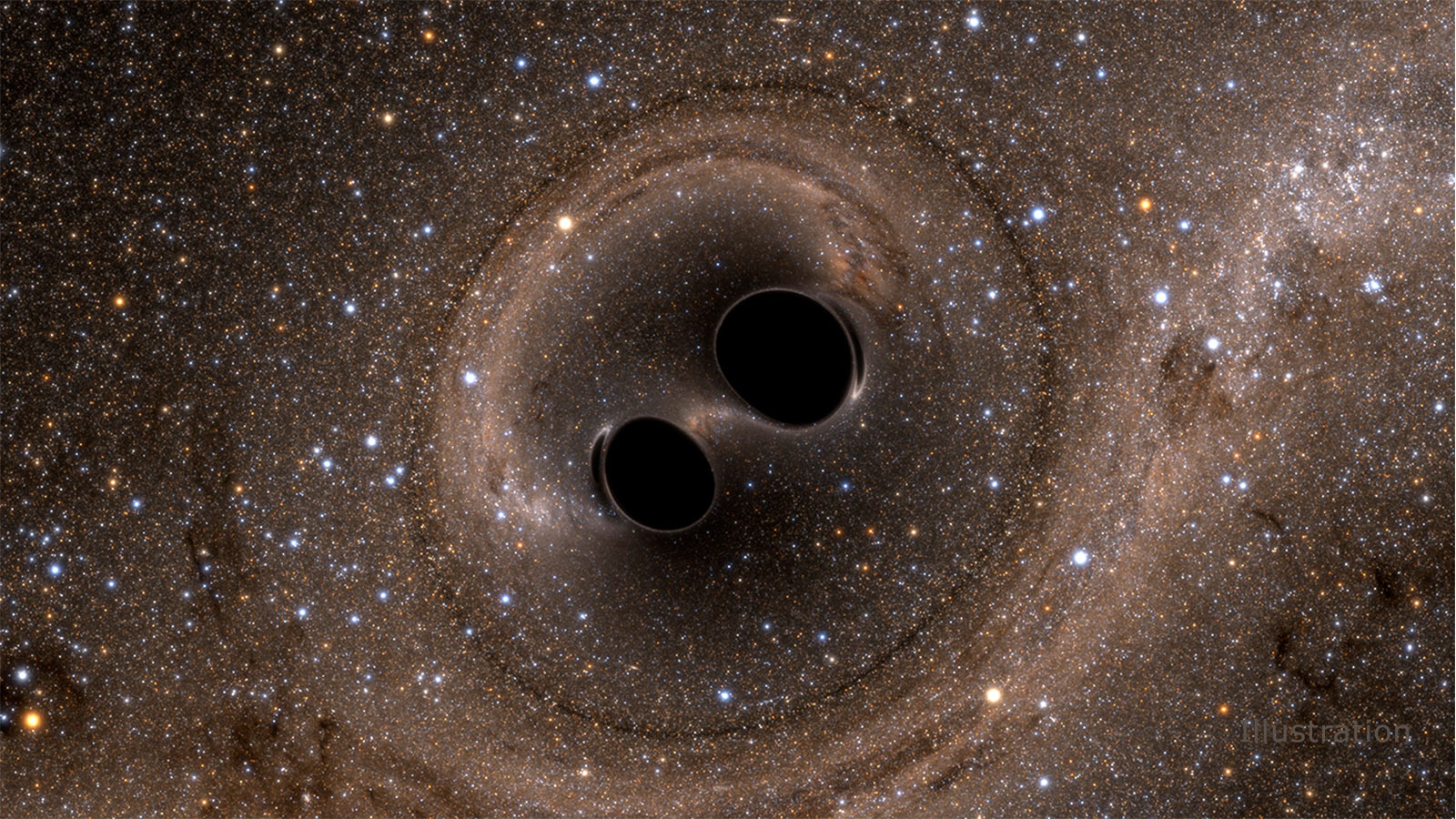
Have you ever wondered what would happen if Earth got gobbled up by a black hole (apart from everybody dying, of course)? Now you can find out, thanks to the online Black Hole Collision Calculator.
For example, our planet's dramatic death would release 32,204,195,564,497,649,676,480,000,000,000,000 megajoules of energy. That's about 54 quintillion times humanity's total annual energy consumption.
And if the black hole harbored 4 million times the mass of the sun, ingesting our poor beleaguered Earth would swell the behemoth's event horizon — the point of no return beyond which nothing, not even light, can escape — by a mere 0.00000000007281%.
Related: The Strangest Black Holes in the Universe
That black hole would be of the supermassive variety, similar in heft to Sagittarius A*, the monster that lurks at the heart of our Milky Way galaxy. But what if we had a run-in with a much smaller black hole — say, one harboring just 20 solar masses? Well, then we'd make more of a dent, causing 0.000014562% event-horizon growth.
And Earth doesn't have to be involved in the modeled smashup; the calculator lets you choose the mass of both bodies. For example, a collision involving black holes that each contain about 30 solar masses — one akin to some of the mergers detected by the Laser Interferometer Gravitational-Wave Observatory Collaboration — would yield a single black hole of 59 solar masses. And this new object's event horizon would be 108.5 miles (174.6 kilometers) wide, 97% larger than those of the merging parties.
The collision calculator, part of the Omni Calculator Project, was built by Álvaro Diez, a physics student at the University of Warsaw in Poland. It took about a week of work to get the calculator up and running, and the majority of that time was spent making the tool appealing and understandable to a broad audience, Diez said.
Get the Space.com Newsletter
Breaking space news, the latest updates on rocket launches, skywatching events and more!
"The physics underneath are not extremely complicated (surprisingly enough, you can use Newtonian mechanics to describe general features of black holes with high precision), but are definitely weird," Diez told Space.com via email.
Diez has built other calculators as well. "For as long as I've known anything about science, I loved sharing that knowledge and helping people learn about the wonders of our universe," he said.
He added that he was motivated to construct the collision calculator by the recent run of big black-hole news. Earlier this year, for example, scientists with the Event Horizon Telescope project released the first-ever direct image of a black hole's shadow.
And just last month, one team of astronomers announced the detection of a star being ripped to shreds by a black hole, and another team discovered three supermassive black holes that are on a collision course.
"So, I could not contain myself anymore and decided to be part of this 'Year of the Black Hole' of sorts by creating a calculator that would help people understand better these mysterious objects," Diez said.
You can find the collision calculator here: https://www.omnicalculator.com/physics/black-hole.
Give it a whirl — it's fun!
- The Mystery of How Black Holes Collide and Merge Is Beginning to Unravel
- Black Hole Quiz: How Well Do You Know Nature's Weirdest Creations?
- Where Do Black Holes Lead?
Mike Wall's book about the search for alien life, "Out There" (Grand Central Publishing, 2018; illustrated by Karl Tate), is out now. Follow him on Twitter @michaeldwall. Follow us on Twitter @Spacedotcom or Facebook.
Join our Space Forums to keep talking space on the latest missions, night sky and more! And if you have a news tip, correction or comment, let us know at: community@space.com.

Michael Wall is a Senior Space Writer with Space.com and joined the team in 2010. He primarily covers exoplanets, spaceflight and military space, but has been known to dabble in the space art beat. His book about the search for alien life, "Out There," was published on Nov. 13, 2018. Before becoming a science writer, Michael worked as a herpetologist and wildlife biologist. He has a Ph.D. in evolutionary biology from the University of Sydney, Australia, a bachelor's degree from the University of Arizona, and a graduate certificate in science writing from the University of California, Santa Cruz. To find out what his latest project is, you can follow Michael on Twitter.









